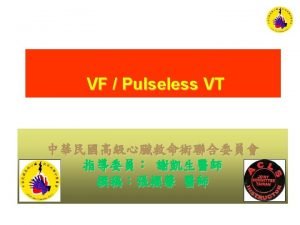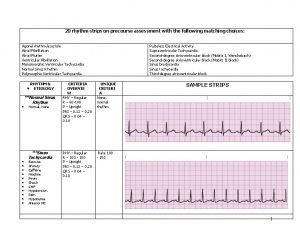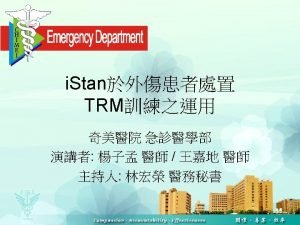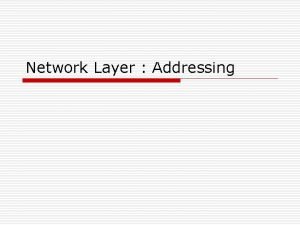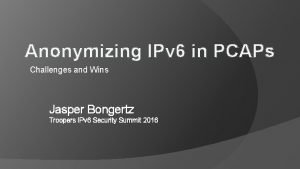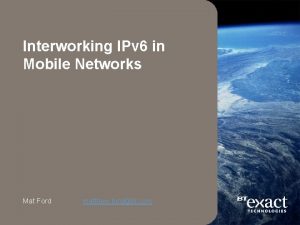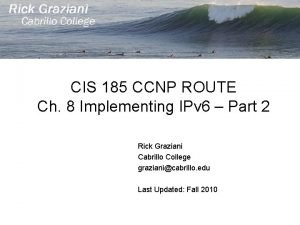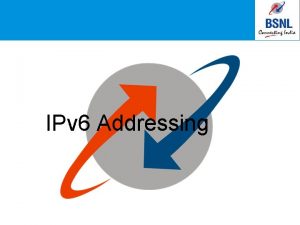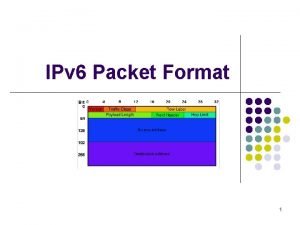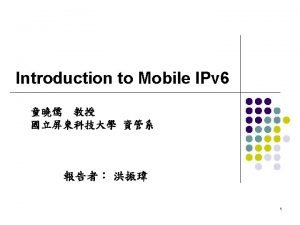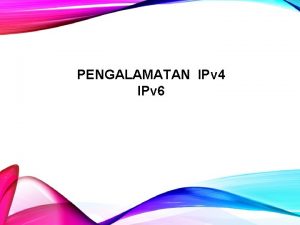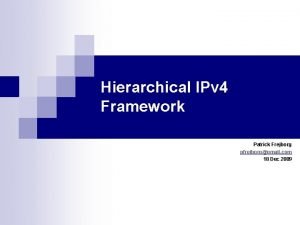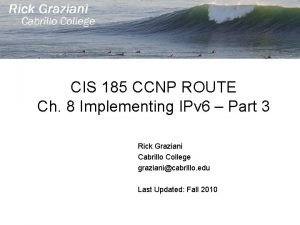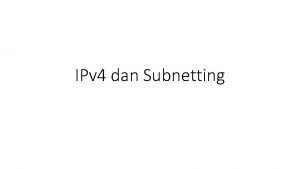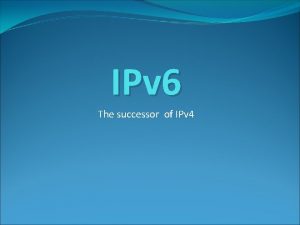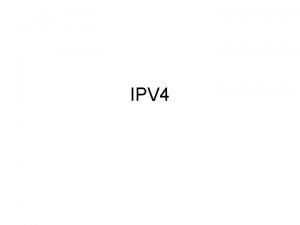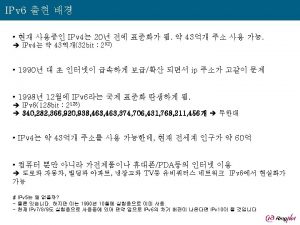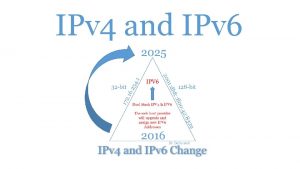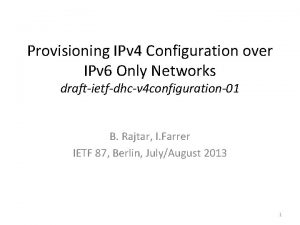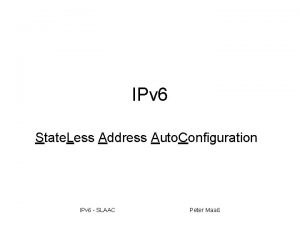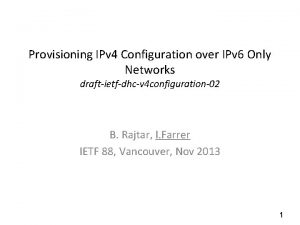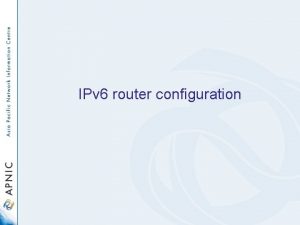Module 5 ACLs for IPv 4 Configuration Instructor




















































- Slides: 52

Module 5: ACLs for IPv 4 Configuration Instructor Materials Enterprise Networking, Security, and Automation v 7. 0 (ENSA)

Module 5: ACLs for IPv 4 Configuration Enterprise Networking, Security, and Automation v 7. 0 (ENSA)

Module Objectives Module Title: ACLs for IPv 4 Configuration Module Objective: Implement IPv 4 ACLs to filter traffic and secure administrative access. Topic Title Configure Standard IPv 4 ACLs Topic Objective Configure standard IPv 4 ACLs to filter traffic to meet networking requirements. Modify IPv 4 ACLs Use sequence numbers to edit existing standard IPv 4 ACLs. Configure a standard ACL to secure VTY access. Secure VTY Ports with a Standard IPv 4 ACL Configure Extended IPv 4 ACLs Configure extended IPv 4 ACLs to filter traffic according to networking requirements. © 2016 Cisco and/or its affiliates. All rights reserved. Cisco Confidential 11

5. 1 Configure Standard IPv 4 ACLs © 2016 Cisco and/or its affiliates. All rights reserved. Cisco Confidential 12

Configure Standard IPv 4 ACLs Create an ACL All access control lists (ACLs) must be planned. When configuring a complex ACL, it is suggested that you: • Use a text editor and write out the specifics of the policy to be implemented. • Add the IOS configuration commands to accomplish those tasks. • Include remarks to document the ACL. • Copy and paste the commands onto the device. • Always thoroughly test an ACL to ensure that it correctly applies the desired policy. © 2016 Cisco and/or its affiliates. All rights reserved. Cisco Confidential 13

Configure Standard IPv 4 ACLs Numbered Standard IPv 4 ACL Syntax To create a numbered standard ACL, use the access-list command. Parameter Description access-list-number Number range is 1 to 99 or 1300 to 1999 deny Denies access if the condition is matched permit Permits access if the condition is matched remark text (Optional) text entry for documentation purposes source Identifies the source network or host address to filter source-wildcard (Optional) 32 -bit wildcard mask that is applied to the source log (Optional) Generates and sends an informational message when the ACE is matched Note: Use the no access-list-number global configuration command to remove a numbered standard ACL. © 2016 Cisco and/or its affiliates. All rights reserved. Cisco Confidential 14

Configure Standard IPv 4 ACLs Named Standard IPv 4 ACL Syntax To create a named standard ACL, use the ip access-list standard command. • ACL names are alphanumeric, case sensitive, and must be unique. • Capitalizing ACL names is not required but makes them stand out when viewing the running-config output. © 2016 Cisco and/or its affiliates. All rights reserved. Cisco Confidential 15

Configure Standard IPv 4 ACLs Apply a Standard IPv 4 ACL After a standard IPv 4 ACL is configured, it must be linked to an interface or feature. • The ip access-group command is used to bind a numbered or named standard IPv 4 ACL to an interface. • To remove an ACL from an interface, first enter the no ip access-group interface configuration command. © 2016 Cisco and/or its affiliates. All rights reserved. Cisco Confidential 16

Configure Standard IPv 4 ACLs Numbered Standard ACL Example The example ACL permits traffic from host 192. 168. 10 and all hosts on the 192. 168. 20. 0/24 network out interface serial 0/1/0 on router R 1. © 2016 Cisco and/or its affiliates. All rights reserved. Cisco Confidential 17

Configure Standard IPv 4 ACLs Numbered Standard ACL Example (Cont. ) • • Use the show running-config command to review the ACL in the configuration. Use the show ip interface command to verify the ACL is applied to the interface. © 2016 Cisco and/or its affiliates. All rights reserved. Cisco Confidential 18

Configure Standard IPv 4 ACLs Named Standard ACL Example The example ACL permits traffic from host 192. 168. 10 and all hosts on the 192. 168. 20. 0/24 network out interface serial 0/1/0 on router R 1. © 2016 Cisco and/or its affiliates. All rights reserved. Cisco Confidential 19

Configure Standard IPv 4 ACLs Named Standard ACL Example (Cont. ) • • Use the show access-list command to review the ACL in the configuration. Use the show ip interface command to verify the ACL is applied to the interface. © 2016 Cisco and/or its affiliates. All rights reserved. Cisco Confidential 20

Configure Standard IPv 4 ACLs Packet Tracer – Configure Numbered Standard IPv 4 ACLs In this Packet Tracer, you will complete the following objectives: • Plan an ACL Implementation. • Configure, Apply, and Verify a Standard ACL. © 2016 Cisco and/or its affiliates. All rights reserved. Cisco Confidential 21

Configure Standard IPv 4 ACLs Packet Tracer – Configure Named Standard IPv 4 ACLs In this Packet Tracer, you will complete the following objectives: • Configure and Apply a Named Standard ACL. • Verify the ACL Implementation. © 2016 Cisco and/or its affiliates. All rights reserved. Cisco Confidential 22

5. 2 Modify IPv 4 ACLs © 2016 Cisco and/or its affiliates. All rights reserved. Cisco Confidential 23

Modify IPv 4 ACLs Two Methods to Modify an ACL After an ACL is configured, it may need to be modified. ACLs with multiple ACEs can be complex to configure. Sometimes the configured ACE does not yield the expected behaviors. There are two methods to use when modifying an ACL: • • Use a text editor. Use sequence numbers. © 2016 Cisco and/or its affiliates. All rights reserved. Cisco Confidential 24

Modify IPv 4 ACLs Text Editor Method ACLs with multiple ACEs should be created in a text editor. This allows you to plan the required ACEs, create the ACL, and then paste it into the router interface. It also simplifies the tasks to edit and fix an ACL. To correct an error in an ACL: • Copy the ACL from the running configuration and paste it into the text editor. • Make the necessary edits or changes. • Remove the previously configured ACL on the router. • Copy and paste the edited ACL back to the router. © 2016 Cisco and/or its affiliates. All rights reserved. Cisco Confidential 25

Modify IPv 4 ACLs Sequence Number Method An ACL ACE can be deleted or added using the ACL sequence numbers. • Use the ip access-list standard command to edit an ACL. • Statements cannot be overwritten using an existing sequence number. The current statement must be deleted first with the no 10 command. Then the correct ACE can be added using sequence number. © 2016 Cisco and/or its affiliates. All rights reserved. Cisco Confidential 26

Modify IPv 4 ACLs Modify a Named ACL Example Named ACLs can also use sequence numbers to delete and add ACEs. In the example an ACE is added to deny hosts 192. 168. 10. 11. © 2016 Cisco and/or its affiliates. All rights reserved. Cisco Confidential 27

Modify IPv 4 ACLs ACL Statistics The show access-lists command in the example shows statistics for each statement that has been matched. • • • The deny ACE has been matched 20 times and the permit ACE has been matched 64 times. Note that the implied deny any statement does not display any statistics. To track how many implicit denied packets have been matched, you must manually configure the deny any command. Use the clear access-list counters command to clear the ACL statistics. © 2016 Cisco and/or its affiliates. All rights reserved. Cisco Confidential 28

Modify IPv 4 ACLs Packet Tracer – Configure and Modify Standard IPv 4 ACLs In this Packet Tracer, you will complete the following objectives: • Configure Devices and Verify Connectivity. • Configure and Verify Standard Numbered and Named ACLs. • Modify a Standard ACL. © 2016 Cisco and/or its affiliates. All rights reserved. Cisco Confidential 29

5. 3 Secure VTY Ports with a Standard IPv 4 ACL © 2016 Cisco and/or its affiliates. All rights reserved. Cisco Confidential 30

Secure VTY Ports with a Standard IPv 4 ACL The access-class Command A standard ACL can secure remote administrative access to a device using the vty lines by implementing the following two steps: • • Create an ACL to identify which administrative hosts should be allowed remote access. Apply the ACL to incoming traffic on the vty lines. © 2016 Cisco and/or its affiliates. All rights reserved. Cisco Confidential 31

Secure VTY Ports with a Standard IPv 4 ACL Secure VTY Access Example This example demonstrates how to configure an ACL to filter vty traffic. • First, a local database entry for a user ADMIN and password class is configured. • The vty lines on R 1 are configured to use the local database for authentication, permit SSH traffic, and use the ADMIN-HOST ACL to restrict traffic. © 2016 Cisco and/or its affiliates. All rights reserved. Cisco Confidential 32

Secure VTY Ports with a Standard IPv 4 ACL Verify the VTY Port is Secured After an ACL to restrict access to the vty lines is configured, it is important to verify it works as expected. To verify the ACL statistics, issue the show access-lists command. • The match in the permit line of the output is a result of a successful SSH connection by host with IP address 192. 168. 10. • The match in the deny statement is due to the failed attempt to create a SSH connection from a device on another network. © 2016 Cisco and/or its affiliates. All rights reserved. Cisco Confidential 33

5. 4 Configure Extended IPv 4 ACLs © 2016 Cisco and/or its affiliates. All rights reserved. Cisco Confidential 34

Configure Extended IPv 4 ACLs Extended ACLs provide a greater degree of control. They can filter on source address, destination address, protocol (i. e. , IP, TCP, UDP, ICMP), and port number. Extended ACLs can be created as: • • Numbered Extended ACL - Created using the access-list-number global configuration command. Named Extended ACL - Created using the ip access-list extended access-list-name. © 2016 Cisco and/or its affiliates. All rights reserved. Cisco Confidential 35

Configure Extended IPv 4 ACLs Protocols and Ports Protocol Options Extended ACLs can filter on internet protocols and ports. Use the ? to get help when entering a complex ACE. The four highlighted protocols are the most popular options. © 2016 Cisco and/or its affiliates. All rights reserved. Cisco Confidential 36

Configure Extended IPv 4 ACLs Protocols and Ports (Cont. ) Selecting a protocol influences port options. Many TCP port options are available, as shown in the output. © 2016 Cisco and/or its affiliates. All rights reserved. Cisco Confidential 37

Configure Extended IPv 4 ACLs Protocols and Port Numbers Configuration Examples Extended ACLs can filter on different port number and port name options. This example configures an extended ACL 100 to filter HTTP traffic. The first ACE uses the www port name. The second ACE uses the port number 80. Both ACEs achieve exactly the same result. Configuring the port number is required when there is not a specific protocol name listed such as SSH (port number 22) or an HTTPS (port number 443), as shown in the next example. © 2016 Cisco and/or its affiliates. All rights reserved. Cisco Confidential 38

Configure Extended IPv 4 ACLs Apply a Numbered Extended IPv 4 ACL In this example, the ACL permits both HTTP and HTTPS traffic from the 192. 168. 10. 0 network to go to any destination. Extended ACLs can be applied in various locations. However, they are commonly applied close to the source. Here ACL 110 is applied inbound on the R 1 G 0/0/0 interface. © 2016 Cisco and/or its affiliates. All rights reserved. Cisco Confidential 39

Configure Extended IPv 4 ACLs TCP Established Extended ACL TCP can also perform basic stateful firewall services using the TCP established keyword. • The established keyword enables inside traffic to exit the inside private network and permits the returning reply traffic to enter the inside private network. • TCP traffic generated by an outside host and attempting to communicate with an inside host is denied. © 2016 Cisco and/or its affiliates. All rights reserved. Cisco Confidential 40

Configure Extended IPv 4 ACLs TCP Established Extended ACL (Cont. ) • • ACL 120 is configured to only permit returning web traffic to the inside hosts. The ACL is then applied outbound on the R 1 G 0/0/0 interface. The show access-lists command shows that inside hosts are accessing the secure web resources from the internet. Note: A match occurs if the returning TCP segment has the ACK or reset (RST) flag bits set, indicating that the packet belongs to an existing connection. © 2016 Cisco and/or its affiliates. All rights reserved. Cisco Confidential 41

Configure Extended IPv 4 ACLs Named Extended IPv 4 ACL Syntax Naming an ACL makes it easier to understand its function. To create a named extended ACL, use the ip access-list extended configuration command. In the example, a named extended ACL called NO-FTP-ACCESS is created and the prompt changed to named extended ACL configuration mode. ACE statements are entered in the named extended ACL sub configuration mode. © 2016 Cisco and/or its affiliates. All rights reserved. Cisco Confidential 42

Configure Extended IPv 4 ACLs Named Extended IPv 4 ACL Example The topology below is used to demonstrate configuring and applying two named extended IPv 4 ACLs to an interface: • • SURFING - This will permit inside HTTP and HTTPS traffic to exit to the internet. BROWSING - This will only permit returning web traffic to the inside hosts while all other traffic exiting the R 1 G 0/0/0 interface is implicitly denied. © 2016 Cisco and/or its affiliates. All rights reserved. Cisco Confidential 43

Configure Extended IPv 4 ACLs Named Extended IPv 4 ACL Example (Cont. ) • • The SURFING ACL permits HTTP and HTTPS traffic from inside users to exit the G 0/0/1 interface connected to the internet. Web traffic returning from the internet is permitted back into the inside private network by the BROWSING ACL. The SURFING ACL is applied inbound and the BROWSING ACL is applied outbound on the R 1 G 0/0/0 interface. © 2016 Cisco and/or its affiliates. All rights reserved. Cisco Confidential 44

Configure Extended IPv 4 ACLs Named Extended IPv 4 ACL Example (Cont. ) The show access-lists command is used to verify the ACL statistics. Notice that the permit secure HTTPS counters (i. e. , eq 443) in the SURFING ACL and the return established counters in the BROWSING ACL have increased. © 2016 Cisco and/or its affiliates. All rights reserved. Cisco Confidential 45

Configure Extended IPv 4 ACLs Edit Extended ACLs An extended ACL can be edited using a text editor when many changes are required. Or, if the edit applies to one or two ACEs, then sequence numbers can be used. Example: • The ACE sequence number 10 in the SURFING ACL has an incorrect source IP networks address. © 2016 Cisco and/or its affiliates. All rights reserved. Cisco Confidential 46

Configure Extended IPv 4 ACLs Edit Extended ACLs (Cont. ) • • To correct this error the original statement is removed with the no sequence_# command the corrected statement is added replacing the original statement. The show access-lists command output verifies the configuration change. © 2016 Cisco and/or its affiliates. All rights reserved. Cisco Confidential 47

Configure Extended IPv 4 ACLs Another Extended IPv 4 ACL Example Two named extended ACLs will be created: • • PERMIT-PC 1 - This will only permit PC 1 TCP access to the internet and deny all other hosts in the private network. REPLY-PC 1 - This will only permit specified returning TCP traffic to PC 1 implicitly deny all other traffic. © 2016 Cisco and/or its affiliates. All rights reserved. Cisco Confidential 48

Configure Extended IPv 4 ACLs Another Extended IPv 4 ACL Example (Cont. ) • • • The PERMIT-PC 1 ACL permits PC 1 (192. 168. 10) TCP access to the FTP, SSH, Telnet, DNS , HTTP, and HTTPS traffic. The REPLY-PC 1 ACL will permit return traffic to PC 1. The PERMIT-PC 1 ACL is applied inbound and the REPLY-PC 1 ACL applied outbound on the R 1 G 0/0/0 interface. © 2016 Cisco and/or its affiliates. All rights reserved. Cisco Confidential 49

Configure Extended IPv 4 ACLs Verify Extended ACLs The show ip interface command is used to verify the ACL on the interface and the direction in which it was applied. © 2016 Cisco and/or its affiliates. All rights reserved. Cisco Confidential 50

Configure Extended IPv 4 ACLs Verify Extended ACLs (Cont. ) The show access-lists command can be used to confirm that the ACLs work as expected. The command displays statistic counters that increase whenever an ACE is matched. Note: Traffic must be generated to verify the operation of the ACL. © 2016 Cisco and/or its affiliates. All rights reserved. Cisco Confidential 51

Configure Extended IPv 4 ACLs Verify Extended ACLs (Cont. ) The show running-config command can be used to validate what was configured. The command also displays configured remarks. © 2016 Cisco and/or its affiliates. All rights reserved. Cisco Confidential 52

Configure Extended IPv 4 ACLs Packet Tracer – Configure Extended IPv 4 ACLs - Scenario 1 In this Packet Tracer, you will complete the following objectives: • Configure, Apply, and Verify an Extended Numbered IPv 4 ACL. • Configure, Apply, and Verify an Extended Named IPv 4 ACL. © 2016 Cisco and/or its affiliates. All rights reserved. Cisco Confidential 53

Configure Extended IPv 4 ACLs Packet Tracer – Configure Extended IPv 4 ACLs - Scenario 2 In this Packet Tracer, you will complete the following objectives: • Configure a Named Extended IPv 4 ACL. • Apply and Verify the Extended IPv 4 ACL. © 2016 Cisco and/or its affiliates. All rights reserved. Cisco Confidential 54

5. 5 Module Practice and Quiz © 2016 Cisco and/or its affiliates. All rights reserved. Cisco Confidential 55

Module Practice and Quiz Packet Tracer – IPv 4 ACL Implementation Challenge In this Packet Tracer, you will complete the following objectives: • Configure a router with standard named ACLs • Configure a router with extended ACLs to meet specific communication requirements • Configure an ACL to control access to network device terminal lines • Configure the appropriate router interfaces with ACLs in the appropriate direction • Verify the operation of the configured ACLs © 2016 Cisco and/or its affiliates. All rights reserved. Cisco Confidential 56

Module Practice and Quiz Lab – Configure and Verify Extended IPv 4 ACLs In this lab, you will complete the following objectives: • • Build the Network and Configure Basic Device Settings Configure and Verify Extended IPv 4 ACLs © 2016 Cisco and/or its affiliates. All rights reserved. Cisco Confidential 57

Module Practice and Quiz What did I learn in this module? • To create a numbered standard ACL, use the ip access-list standard access-list • • name global configuration command. Use the no access-list-number global configuration command to remove a numbered standard ACL. Use the show ip interface command to verify if an interface has an ACL applied to it. To create a named standard ACL, use the ip access-list standard access-list-name global configuration command. Use the no ip access-list standard access-list-name global configuration command to remove a named standard IPv 4 ACL. To bind a numbered or named standard IPv 4 ACL to an interface, use the ip access-group {access-list-number | access-list-name} { in | out } global configuration command. To remove an ACL from an interface, first enter the no ip access-group interface configuration command. To remove the ACL from the router, use the no access-list global configuration command. © 2016 Cisco and/or its affiliates. All rights reserved. Cisco Confidential 58

Module Practice and Quiz What did I learn in this module? • Extended ACLs can filter on source address, destination address, protocol (i. e. , IP, TCP, • • • UDP, ICMP), and port number. To create a numbered extended ACL, use the Router(config)# access-listnumber {deny | permit | remark text} protocol source-wildcard [operator [port]] destination-wildcard [operator [port]] [established] [log] global configuration command. ALCs can also perform basic stateful firewall services using the TCP established keyword. The show ip interface command is used to verify the ACL on the interface and the direction in which it was applied. To modify an ACL, use a text editor or use sequence numbers. An ACL ACE can also be deleted or added using the ACL sequence numbers. Sequence numbers are automatically assigned when an ACE is entered. © 2016 Cisco and/or its affiliates. All rights reserved. Cisco Confidential 59

 Relative configuration vs absolute configuration
Relative configuration vs absolute configuration Absolute configuration
Absolute configuration Electron configuration vs noble gas configuration
Electron configuration vs noble gas configuration Difference between relative and absolute configuration
Difference between relative and absolute configuration C device module module 1
C device module module 1 Linee guida acls
Linee guida acls Atenolol to metoprolol conversion
Atenolol to metoprolol conversion Yawnproof
Yawnproof Pulseless vf
Pulseless vf Bradicardia acls
Bradicardia acls Acls guidelines
Acls guidelines Acls rhythm recognition
Acls rhythm recognition Aesp acls
Aesp acls Agonal rhythm asystole strip
Agonal rhythm asystole strip Tatalaksana acls
Tatalaksana acls What is acls
What is acls Christian sticherling
Christian sticherling Acls flowsheet
Acls flowsheet H and ts of acls
H and ts of acls Foliate linux
Foliate linux 意識abcd
意識abcd Business services
Business services Metoprolol for tachycardia
Metoprolol for tachycardia Secondary survey atls
Secondary survey atls H's and t's acls
H's and t's acls Kuiz ujian buaya
Kuiz ujian buaya Ipv format
Ipv format Ipv 4
Ipv 4 Ipv vpn
Ipv vpn Masern impfstoff merieux
Masern impfstoff merieux Ipv
Ipv Ipv foo
Ipv foo Ipv carve out
Ipv carve out Bt smar
Bt smar Ipv allianz
Ipv allianz Ipv route
Ipv route Ipv header
Ipv header Ipv 4 terdiri dari... *
Ipv 4 terdiri dari... * Ipvچیست
Ipvچیست Ipv format
Ipv format Voith ipv
Voith ipv Test ipv que mide
Test ipv que mide Ipv route
Ipv route Ipv format
Ipv format Modelo de ipv en cuba
Modelo de ipv en cuba Gt ipv
Gt ipv Classful subnetting
Classful subnetting Frejborg loka
Frejborg loka Ipv
Ipv Ipv protocol
Ipv protocol Ipv route
Ipv route Ipv 4 terdiri dari... *
Ipv 4 terdiri dari... * ۰میکنی
۰میکنی








